 Recently, I read two books that meticulously defined what is known as Strategic Communication. The first is a textbook titled “Principles of Strategic Communication”, written by four professors of Communication Studies from the United States, Derina Holtzhausen et al. The defining factor for an action to be classified as strategic communication is the objective that is predetermined and preceded by a deliberate plan for its achievement. Their full definition reads as follows:
Recently, I read two books that meticulously defined what is known as Strategic Communication. The first is a textbook titled “Principles of Strategic Communication”, written by four professors of Communication Studies from the United States, Derina Holtzhausen et al. The defining factor for an action to be classified as strategic communication is the objective that is predetermined and preceded by a deliberate plan for its achievement. Their full definition reads as follows:
“Strategic communication is the practice of deliberate and purposive communication that a communication agent enacts in the public sphere on behalf of a set entity to reach preset goals.”
In their view, Strategic Communication is a newly established field of study that emerged in the early 21st century, marked by the publication of the academic periodical ‘International Journal of Strategic Communication’ in 2007. All three main elements mentioned above must be present for any communication effort to be considered strategic: it must be planned, goal-oriented, and take place in the public domain. They emphasized that there must be an agent or intermediary who carries out communication activities on behalf and for the interest of a principal.
Considering that strategic communication must be planned to achieve specific goals, there must also be a way to assess whether the communication efforts have produced the desired impact. To this end, the book outlines a method used by corporate communication practitioners consisting of four sequential components, abbreviated to ROPE (Research, Objective, Programming, Evaluation), which are outlined as follows.
• Research is the first and mandatory step. At this stage, communication practitioners study all relevant aspects about and of concern to the client, as well as the real and potential problems that need to be addressed by way of communication activities. Stakeholder identification should also be carried out from the very beginning.
• Objective refers to the phase in which the targeted goals and desired outcomes are detailed in writing. The results from the preceding Research phase constitute the the foundation on which the objective is preset. Without clearly defined objectives there would be no basis for evaluating the success of the action.
• Programming is the core of the communication process, where communication is translated into concrete actions. Themes, paid media placements, events, and other supporting tools become operational in this phase. Effective program implementation is often referred to as the communication phase focused on the established Objectives and grounded on the Research conducted earlier.
• Evaluation is conducted at the end and involves another round of research to measure program outcomes against objectives, assess the effectiveness of actions taken, and serves as accountability for the work performed.
Communication practitioners follow these four stages in a planned manner to achieve the impact agreed upon at the outset. This structured process under the ROPE framework is primarily applied in campaigns or advocacy for specific issues. Some examples include anti-smoking campaigns, post-crisis reputation recovery, anti-corruption advocacy, and other initiatives involving large audiences, including those on a national scale.
For those experienced in communication practices, the steps described in the ROPE formula may be nothing new. However, they are still useful as a guide for carrying out advocacy or campaign efforts. Interestingly, the academics who authored this book position ROPE at the core of what they define as a new discipline called Strategic Communication. As is common in social sciences, a single term can have multiple interpretations; therefore, we must always examine the context in which it is used or presented.
Earlier, I mentioned two books on strategic communication. The second is authored by two internationally recognized Swedish academics from Lund University: Jesper Falkheimer and Mats Heide. Their book, titled “Strategic Communication – An Introduction”, was written several years before the one by Holtzhausen et al. mentioned above.
Falkheimer and Heide take a different, highly theoretical approach. What they share in common with Holtzhausen et al. is the view that Strategic Communication constitutes a new academic discipline and a field of study. Its scope is broad, encompassing most communication activities carried out by corporations in the public domain. Another similarity with Holtzhausen’s perspective lies in its ultimate purpose: to build trust, shape reputation, and create meaning.
As professional communication practitioners we must constantly pay attention to developments in global thinking so that we can participate in international forums with comparable knowledge and understanding. Moreover, in Indonesia, clients increasingly expect their communication efforts to generate measurable impact, designed and executed in a structured manner. At the end of the day, they demand accountability from those entrusted to deliver such outcomes.
Noke Kiroyan
Chairman, Kiroyan Partners
This article has been published in PR Indonesia Magazine, Issue 115, July-August 2025, page 42 – 43.
Download the clipping here



